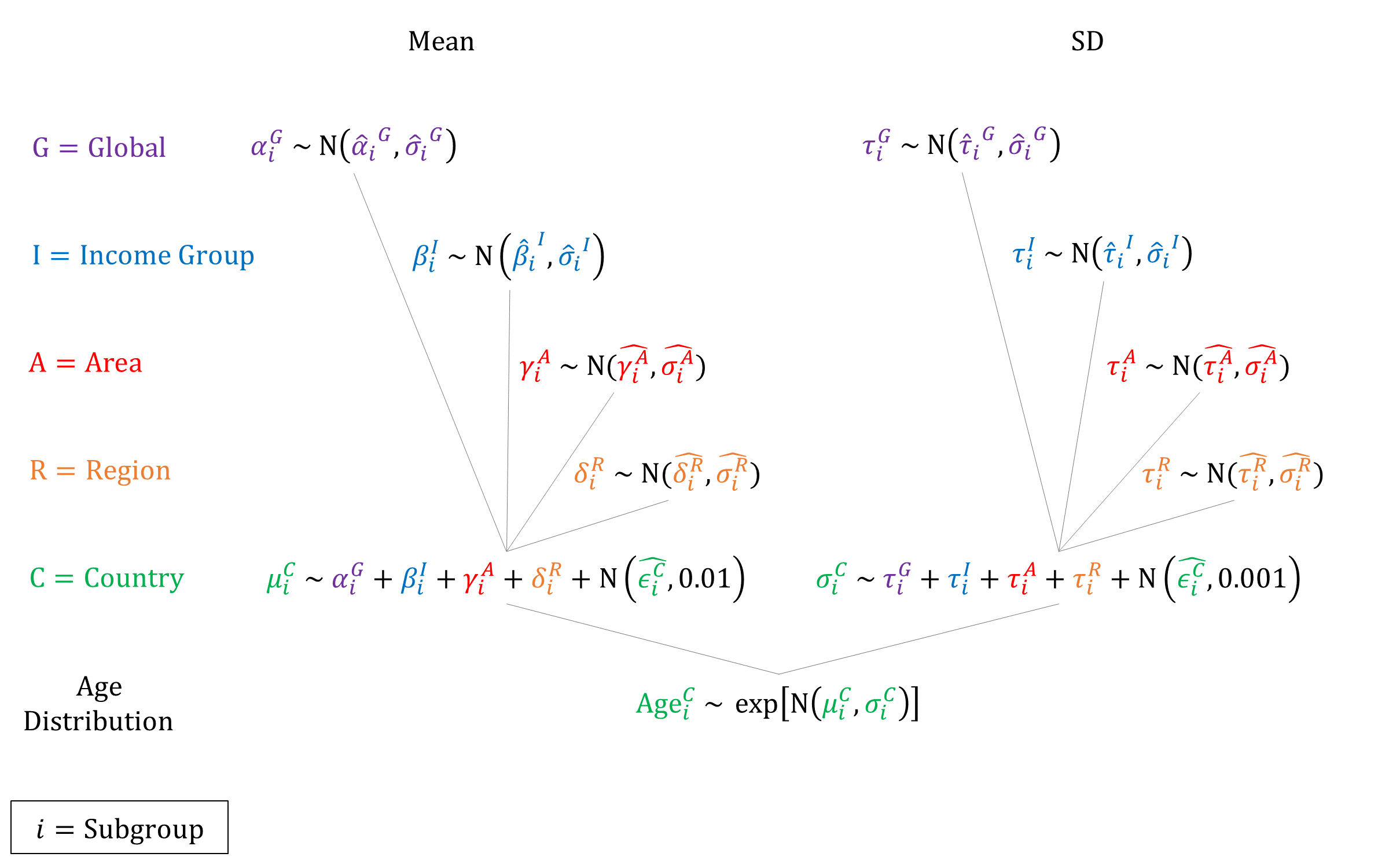Age of Sexual Debut
Model Inputs \(\rightarrow\) Family Planning Parameters \(\rightarrow\) Age of Sexual Debut
Overview
Age of sexual debut is used in the model to simulate the beginning of a woman’s reproductive life-cycle. We do not model frequency of sexual behavior, but assume that once a woman becomes sexually active she faces age-specific rates of fecundity which may be modified by the use of contraception.
Data
We analyzed DHS data (v531) from 1,150,813 women aged 35 and over from 230 surveys in 71 countries. We restricted the dataset to women aged 35 and over to limit the impact of censoring - women who have not yet experienced sexual debut cannot report the age at which they started, leading to biased estimates among observations at younger ages. Among women aged 35 and over, 1.5% reported not having had sex. This small group of potentially censored ages has limited impact on our estimates, so for simplicity we removed them from the dataset. Here we plot the distribution of reported ages of sexual debut by location (urban/rural) and level of education.
To explore potential secular trends we estimated the mean and variance of age of sexual debut by year for each urban/rural location and education group. We see that they are fairly stable across years, so for simplicity we assume that the distribution within these demographic groups is stationary over time.
Parameters
We assumed that age of sexual debut follows a log-normal distribution, and used hierarchical models to estimate the mean and variance for each country. Because no high income countries are available in the DHS data we used the priors estimated for upper-middle income countries to set priors for high income countries.

Priors
Model Implementation
Age of sexual debut is drawn for each woman at model initiation. Once she reaches this age she begins to face monthly probabilities of pregnancy. As a simplifying assumption, all women are given an age of sexual debut, although in reality a small percentage report never having sex.
GMatH (Global Maternal Health) Model - Last updated: 28 November 2022
© Copyright 2020-2022 Zachary J. Ward
zward@hsph.harvard.edu